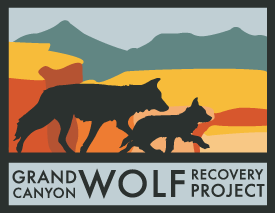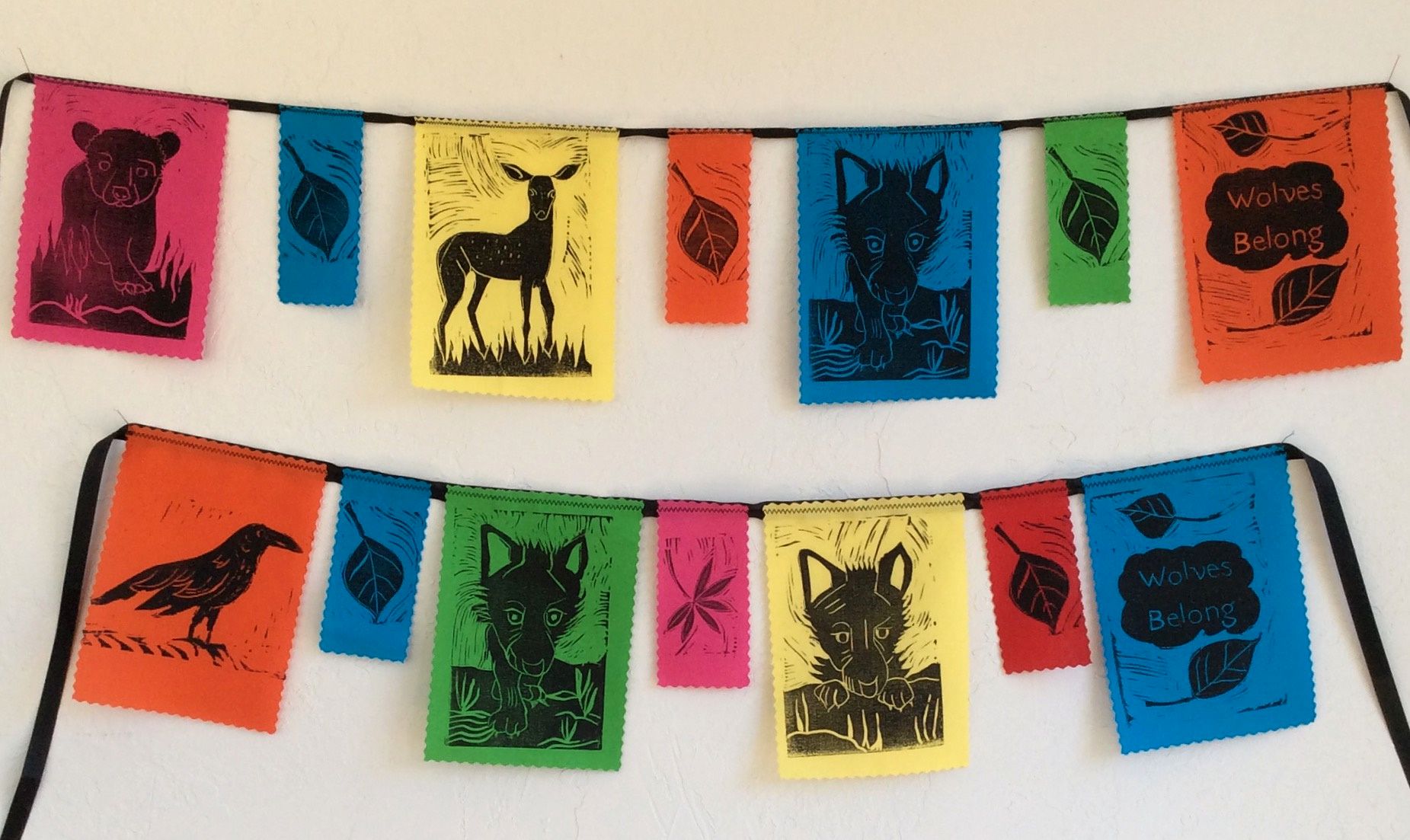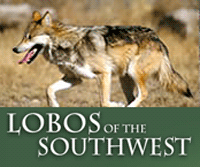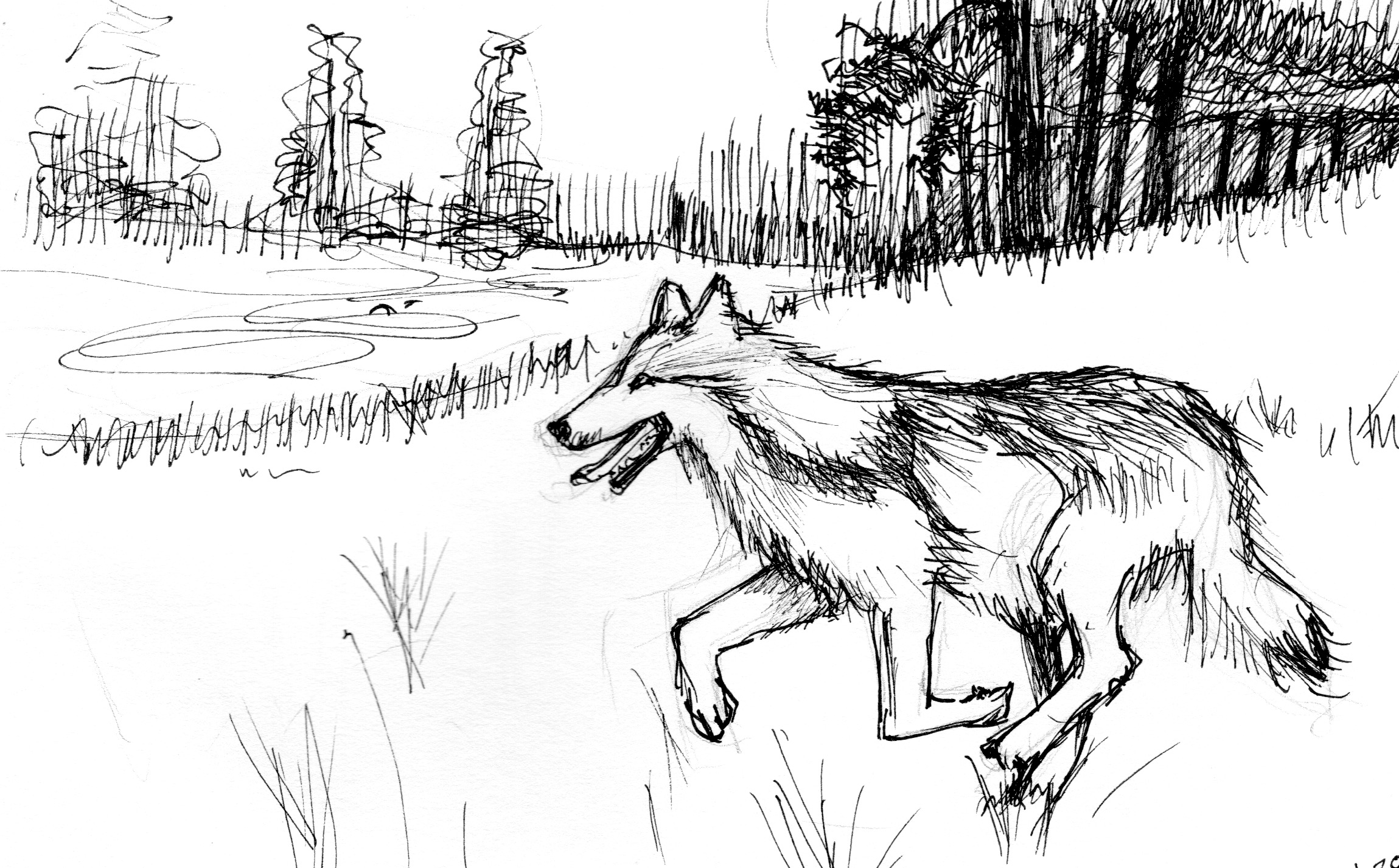
Thank you so much for all of your generous support. Your contributions and actions are helping us spread the word that wolves belong in the Grand Canyon region.
We have good reason and ample scientific proof to shout out and make this message loud and clear, because Mexican wolves are already making the journey back to our region, making the journey home.
Scientists say the Grand Canyon region is prime habitat for wolves because:
• The Grand Canyon Region contains large tracts of undeveloped land suitable for wolf habitat.
• Within the region there are over 18 million acres of public lands including National Forests and National Park lands.
• Large herds of elk and deer provide ample food for wolves.
• A wildlife corridor connects the current reintroduction area for Mexican wolves to the Grand Canyon region.
• The Grand Canyon region could sustain a population of potentially up to 250 wolves.
Imagine up to 250 wolves living in the Grand Canyon region!
The wolves say:
Well, they don’t need words because their recent travels into the Grand Canyon region tell us that this is their perfect habitat and they want to come home.
Their journeys:
• In 2000 and 2002, at least two Mexican wolves made it to the Flagstaff area from the Blue Range Wolf Recovery Area. One was a female from the Campbell Blue pack who travelled hundreds of miles from her release site. Sadly, she traveled all that way only to be hit by a vehicle near Flagstaff.
• In 2018, at least three Mexican wolves dispersed into the Grand Canyon region. This is good news and bad news. Good because Mexican wolves are on the move into the Grand Canyon region. Bad because not one wolf remained in the region, either due to mortality or because the current recovery plan mandates removal of wolves that travel north of Interstate 40. The wolves were captured and released back into the MWEPA - the Mexican Wolf Experimental Population Area.
• In May of this year, one of those three wolves did travel north of I-40 and was headed straight for the south rim of the Grand Canyon before he was picked up and removed.
You’re helping us tell their story! In 2018, your generous donations supported the following work on behalf of these amazing animals:
• We traveled to the International Wolf Symposium in Minneapolis and gave a presentation to wolf experts from around the world titled The Potential for Wolf Recovery in the Grand Canyon Region.
• We hosted outreach tables at 14 regional events and gave 19 public presentations on the science behind wolf recovery.
• We partnered with the Sedona International Film Festival to co-host the Wild & Scenic Film Festival for the first time in Sedona, reaching out to a new community through important conservation films and enlightened Q & A sessions.
Your support is more important than ever before now that the wolves are on the move.
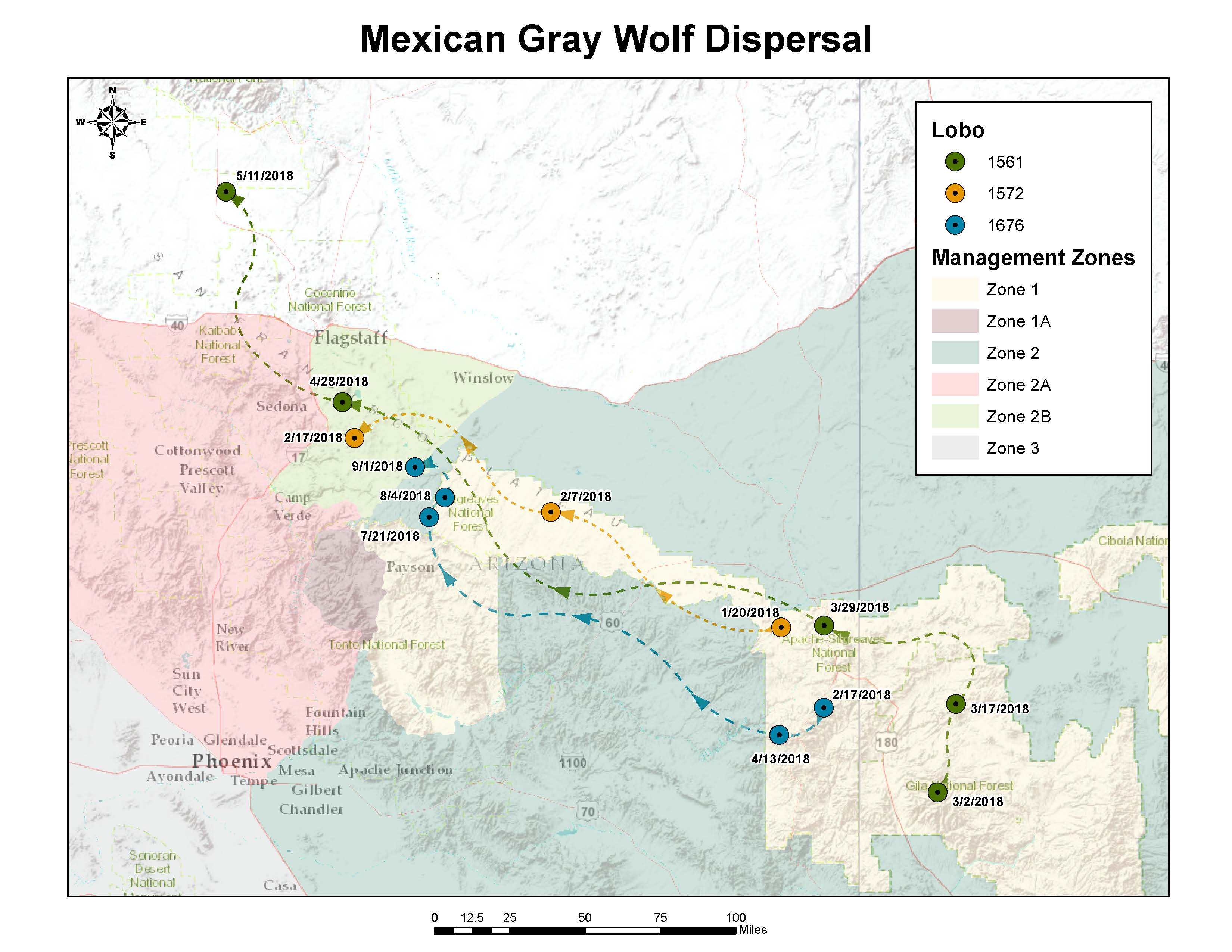
In 2019 we will create an exciting story map which will depict the journeys of the individual Mexican gray wolves traveling to the Grand Canyon region. This will be an interactive experience, combining maps with narrative text and images to illustrate the geographic and political landscape the wolves must travel across.
Currently, there are three wolves featured on our draft map, but we expect more wolves dispersing into the region in the coming years.
By giving generously you can help us launch this exciting map project and help more people in the Grand Canyon region become aware that wolves are moving in our direction. We believe that awareness and education will be key to creating the support needed for a sustainable wolf population, and the story map is a core tool we can use to that end.
No matter how large or small your gift, it does make a difference. Help us spread the word and become part of the community that welcomes and embraces wolves back to the region.
Many thanks,
Emily Renn
Executive Director
Grand Canyon Wolf Recovery Project
